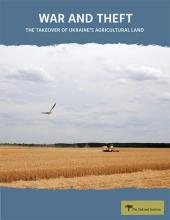Land Library Search
Through our robust search engine, you can search for any item of the over 73,000 highly curated resources in the Land Library.
If you would like to find an overview of what is possible, feel free to peruse the Search Guide.
/ library resources
Showing items 1 through 9 of 537.Despite the existence of a legal framework defining the right to fair compensation, and notwithstanding the vast literature on transnational and domestic land deals, no theory has been developed so far to allow for a specific analysis of the economics of fair compensation in large-scale land acqu
War and Theft: The Takeover of Ukraine’s Agricultural Land, exposes the financial interests and the dynamics at play leading to further concentration of land and finance.
Despite the progress made in terms of global and national land policy frameworks, effective changes in practices remain limited.
The land rush has remained, and is likely to remain, a significant global phenomenon despite waning international media attention. The scope of the phenomenon is likely to be wider than previously thought.
Context and background Land grabbing has been in the news in Africa in recent years. Fertile land is increasingly falling into the hands of national or international private investors.
A 22 minute video about one of the biggest cases of agricultural land grabbing in Senegal: 20,000 hectares;first allocated to Senhuile-Sénéthanol;now known as Les Fermes de la Téranga.
There are not fixed conditions that make potential agricultural frontiers attractive to capital: different spaces and strategies are chosen in relation to previous failed experiments, including those strongly contested by social movements.
A nine-minute video. Most rural people in Uganda have rights to their rural land through customary tenure arrangements;representing 75-80% of land holdings: but only 15-20% of the land is formally registered.
El monocultivo de la Palma Aceitera ha crecido de manera exponencial en el estado de Chiapas, sobre todo en los últimos 20 años. En la actualidad, conforme datos oficiales, se estima que el 43.74% de palma aceitera sembrada en México, se encuentra en Chiapas.








